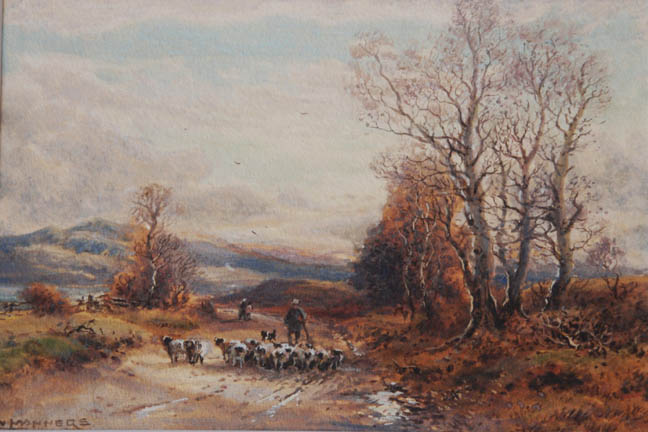Upon entering galleries and auction houses, we are often confronted with a wide variety of watercolour paintings, ranging from large, dramatic landscapes to small delicate sketches. Many of these date from the nineteenth century, an era during which watercolour painting flourished at the hands of some of the nation’s finest artists.
The subject matter of these paintings often followed themes of an idyllic countryside or seascape with figures painted in blues, greens and browns, caught unawares at their daily work. In fact, the paintings’ similarities are no coincidence; they stand as testament to the fascinating and dramatic social and political changes of their time.
This period, a time we now know as the industrial revolution, was to change our lives in Britain and beyond, forever. Its engineering achievements altered the shape of much of the world and, with it, new wealth helped to nurture the rise of a new middle class. The British landscape also underwent changes and as flourishing industries dotted the land with factories, chimneys, towns and railways, a means of recording the changes was required.
The original focus of British landscape art was not that of aesthetics and romanticism. Instead, it was produced to fulfill a practical purpose; it sought to represent the topography of a place or of a particular building and aimed to serve architectural, historical or geographical ends.
The new industries created jobs and higher standards of living began to follow. Whilst for many factory work only meant longer hours and low pay, some were able to rise to more senior positions. These benefits were to be a key influence on the proliferation of watercolour painting. Better jobs offered higher wages and resulted in employees having, for the first time, a disposable income. With this, they could decorate their homes, employ servants and nannies, buy the latest household inventions to ease their chores and use the advancements in passenger steam engines to go on holiday.
A new luxury was created; that of leisure time.
‘A shepherd leading his flock’, (William Manners, 1860-1930) 8"x 11", watercolour, signed and framed.
The wealthiest young men would venture forth on a Grand Tour of Europe, exposing them to culture, which – it was hoped – would shape them into gentlemen. In the absence of widespread use of photography, painting landscapes became a popular method of recording what they had seen in order to show friends and family back home. Many of the middle and upper classes sought tuition on how to paint, hiring respected artists for lessons or by revising one of the many newly-published guides to watercolour painting. Setting out into the landscape, they tried their hand at painting, recording their travels or simply their large estates and growing families.
However, with industry and cities growing apace, the serene and healthy countryside seemed increasingly remote; smog filled the air, large brick factories began to appear in the fields and country dwellers were drawn towards the growing towns to seek employment. For watercolour painting, idyllic scenes of a pure and gentle country life increased in popularity. A blind eye was being turned to the harsh realities of peasant life and, gradually, the practical and traditional compositions of the topographical landscape paintings began to change.
As the genre entered a new phase in its development and popularity, an impressionistic, emotional style began to replace the need for accuracy of detail. Artists such as John Sell Cotman (1782-1842) accurately represented landscapes in their paintings but imbued them with emotion and depth. The traditional school of landscape art was now influenced by the emotional and, in 1900, a watercolour guidebook typically advised, ‘…study the moods of nature, don’t just try to capture a scene. Gloomy or peace, or quiet or unrest’.
Today these influences are manifest in the wealth of nineteenth century watercolours painted by amateur artists as well as by professionals. In fact the term ‘amateur’ can be misleading as many of these artists showed great skill and tenacity in their quest and determination to accomplish the beautiful art of watercolour painting.
Zoe Finlay
2012


